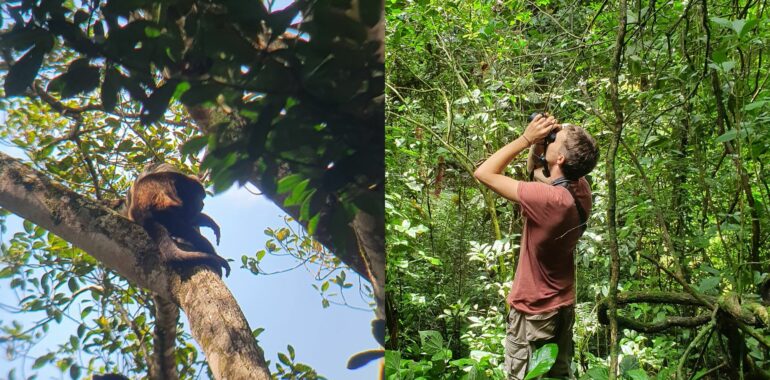“Patrón de actividad diurno de los monos aulladores de manto (Alouatta palliata) y su variación en función de factores climáticos”
By Biologist María Pira
Who are the Mantled Howler Monkeys?
The Alouatta palliata monkey, known as the “mantled howler monkey”, is a fascinating species of the primates that inhabits tropical regions of Mesoamerica and South America. It is distinguished by its distinctive dark fur and the unique ability to emit powerful vocalizations that can be heard over long distances, earning it recognition as one of the loudest primates in the world. These monkeys are predominantly arboreal, preferring to live in the forest canopy, where they feed on a herbivorous diet consisting of leaves, fruits, and flowers. Alouatta palliata is characterized by its complex social system, with groups incorporating individuals of various ages and hierarchies. Their behavior, activity patterns, and adaptations to climatic factors, as examined in this study, offer a captivating insight into the lives of these primates and the interaction between their biology and the environment they inhabit. In addition to their distinctive appearance, Alouatta palliata stands out for its complex social structure and arboreal behavior, contributing to its exceptional adaptation to life in tropical forest.
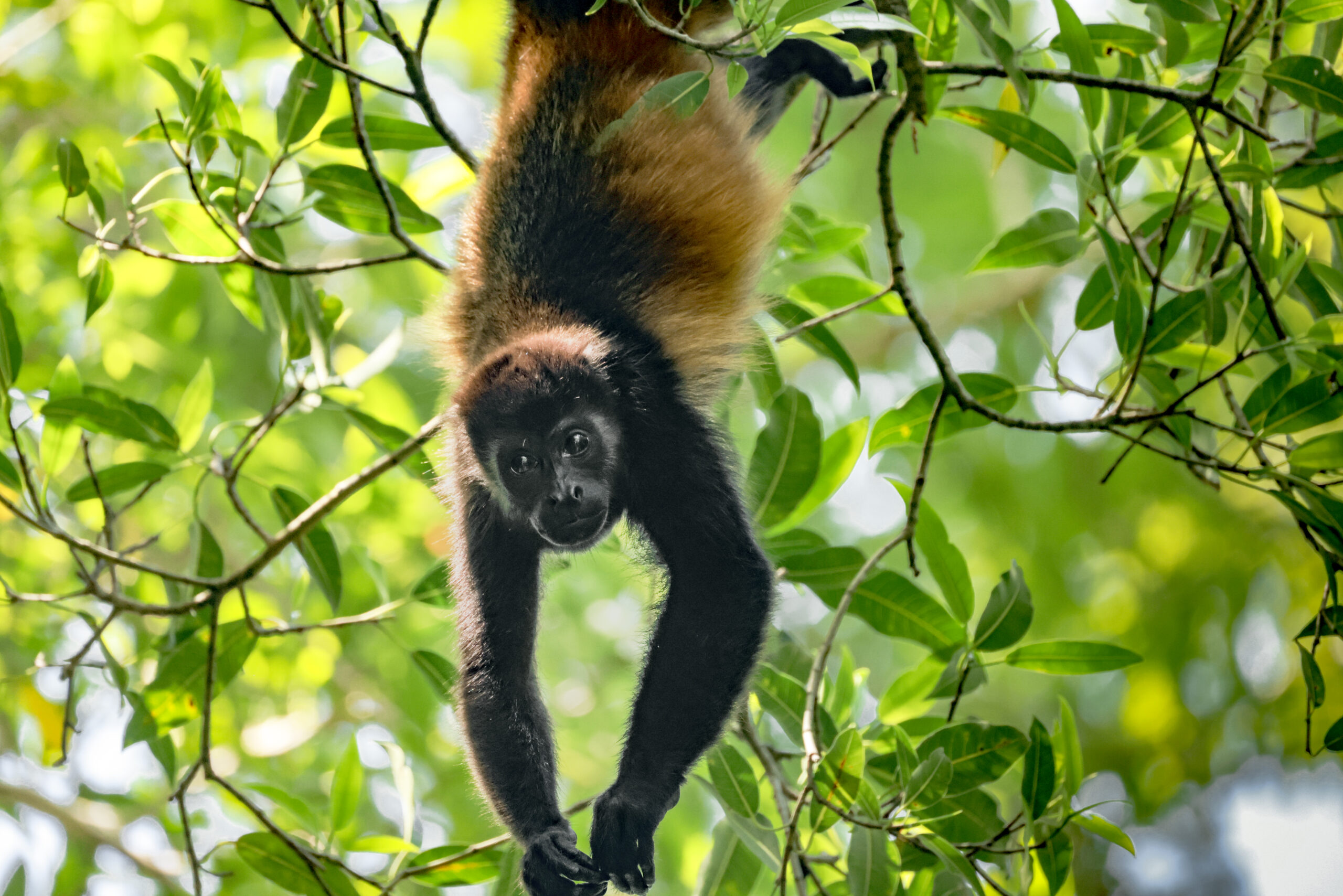
Figure 1. Adult mantled howler monkey (Alouatta palliata) hanging from branches of a tree documented by FLAAR in Livingston, Guatemala (Alejandra Gutiérrez, FLAAR Mesoamérica, 2021).
What is an Activity Pattern in Animals and How are These Affected?
An activity pattern describes the frequency, duration, and/or sequence of different behaviors exhibited by an animal regularly. The factors influencing activity patterns include disturbances, reproductive season, and territoriality, among others. However, there are more complex elements that can alter the ethology of various animals, with temperature and environmental conditions of the ecosystem being one of them. Various studies have shown that animals belonging to groups such as reptiles, mammals, birds, and amphibians can adjust their behavior in response to drastic environmental changes, such as those caused by climate change. These behavior modifications range from alterations in diet to changes in migration patterns and can even impact reproductive behaviors and diurnal- nocturnal activity. There are five subspecies, one of them being the Mexican mantled mantled howler monkey (Alouatta palliata mexicana), which is distributed in the states of Veracruz, Tabasco, Chiapas, and Oaxaca in Mexico were this study took place.

Figure 2. Research team observing the variation in behavior among members of one of the monkey study groups (Photographs by biologist María Pira, 2022).
How did the Environmental Variation Affect the Mantled Howler Monkey?
As mentioned earlier, climate change is one of the primary factors altering the behavior of different animal groups, and the mantled howler monkey is no exception. This study was able to determine, through observations, ethological diagrams, documentation, and continuous approaches to these primates, that environmental change has a direct influence on this group of primates. Factors such as temperature, rainfall, and humidity variation were found to be some of the climatic factors influencing the diurnal behavior of the mantled howler monkey (Alouatta palliata), due to their direct impact on energy requirements, water balance, and thermoregulation.
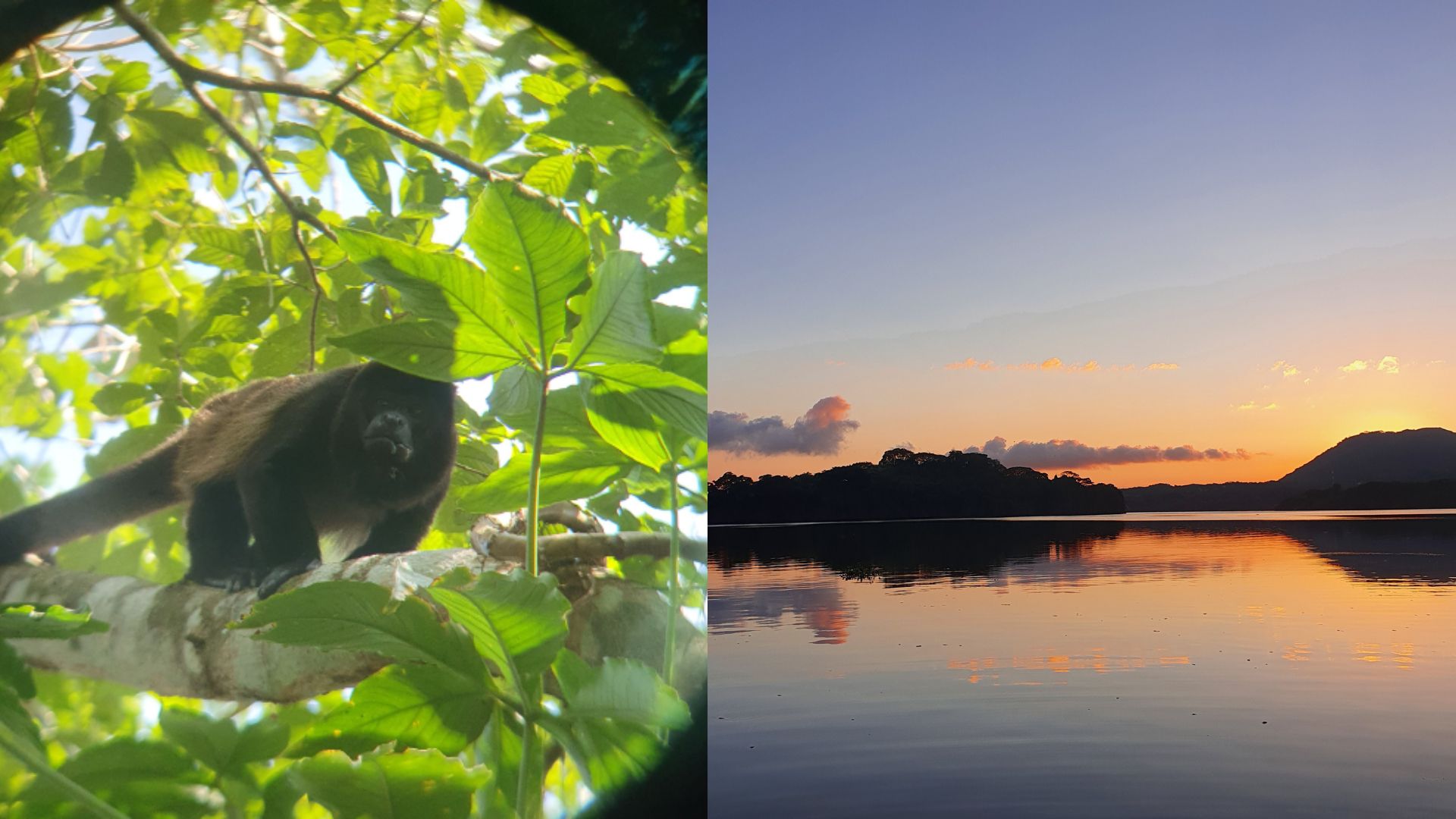
Figure 3. One of the mantled howler monkeys (Alouatta palliata) exhibiting variations in their behavioral patterns influenced by factors like temperature. The study was conducted on a private estate along the shores of Lake Catemaco in Veracruz, Mexico. (Photographs by biologist Maria Pira, 2022).
What Was Observed in the Monkeys?
Through direct observation methodologies, primarily employing a “continuous focal animal sampling method” (approximately 263 hours of observation and fieldwork), Pira identified a variation in the diurnal behavioral pattern of a group of seven adult males from two mantled howler monkey groups. The results and graphs revealed a “bimodal” activity pattern, with peaks in the morning and afternoon. This implies that the analysis and results indicated increased activity in the morning and afternoon for this monkey group in response to environmental changes, underscoring the influence of these changes on their ethology and causing behavioral shifts based on the monkeys’ comfort with environmental conditions.
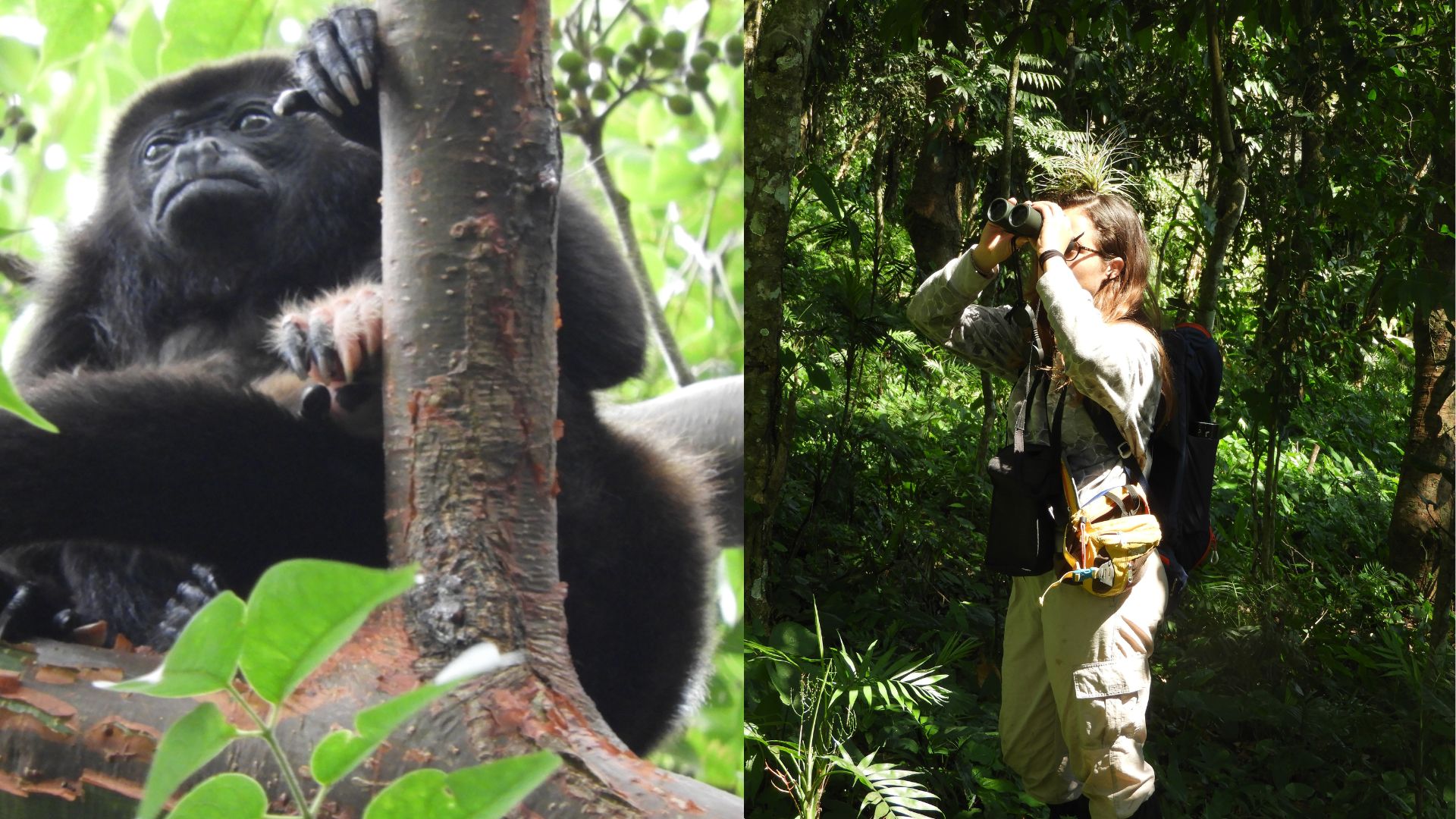
Figure 4. Biologist Maria Pira (Author of this research) during fieldwork observing and registering the monkeys behavior (Photographs by MSc. Ricardo Ortíz, 2022).
But what environmental changes affected the behavior of the monkeys?”
According to the observations of this study, Pira found a significant variation in diurnal activity was noted based on various factors, with temperature being the primary one. The increase in environmental temperature caused disruptions in behavior, as evidenced by peaks in the analysis graphs. It was observed that peaks in activity on warm days occurred one hour earlier than peaks on cold days. Likewise, although the presence of rain did not show the same intensity regarding the change in behavior in individuals, this variable did have some impact on the ethology of the monkeys. Interestingly, the results of Pira´s study aligned with previous research, demonstrating how environmental changes influence the behavior of this monkey species, as well as other mammals.
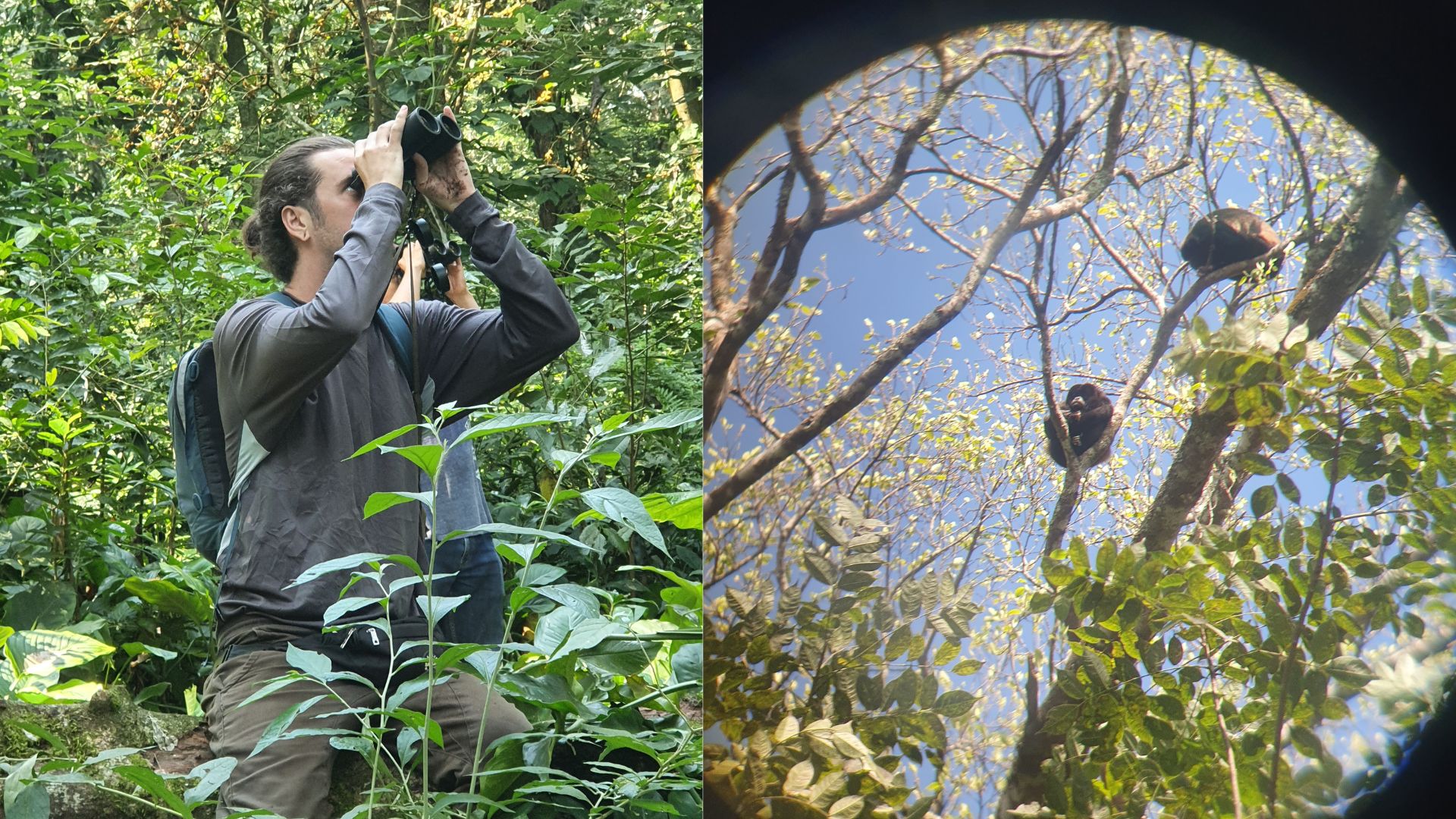
Figure 5. Research team observing the variation in the behavior patterns in one of the groups of monkeys of this study (Photographs by biologist Maria Pira, 2022).
What Does This Study Tell Us?
This groundbreaking study provides us with a closer look at the famous mantled howler monkey (Alouatta palliata) of Mesoamerica, allowing us to explore in detail its fascinating ethology and biology. It represents a significant contribution to the fields of ecology, animal ethology, biology, and mastozoology. However, Pira ́s study not only imparts information about this astonishing creature but also underscores the sensitivity of these species to environmental changes, particularly in crucial factors such as temperature, just as her study concluded.
In summary, through this research, Pira alerts us to how issues like climate change and global warming could directly impact the biology of these primates, and maybe also other species and animal groups in Mesoamerica. The study emphasizes how temperature influences the diurnal activity of mantled howler monkeys, highlighting how in this regard, climate change could further impact their behavior patterns, potentially affecting behaviors associated to reproductive and feeding aspects, among others. Ultimately, it prompts us to reflect on the remarkable sensitivity of these species to environmental changes and how these changes can affect them in the short and long term. We have to protect them!
Were you already familiar with this information?
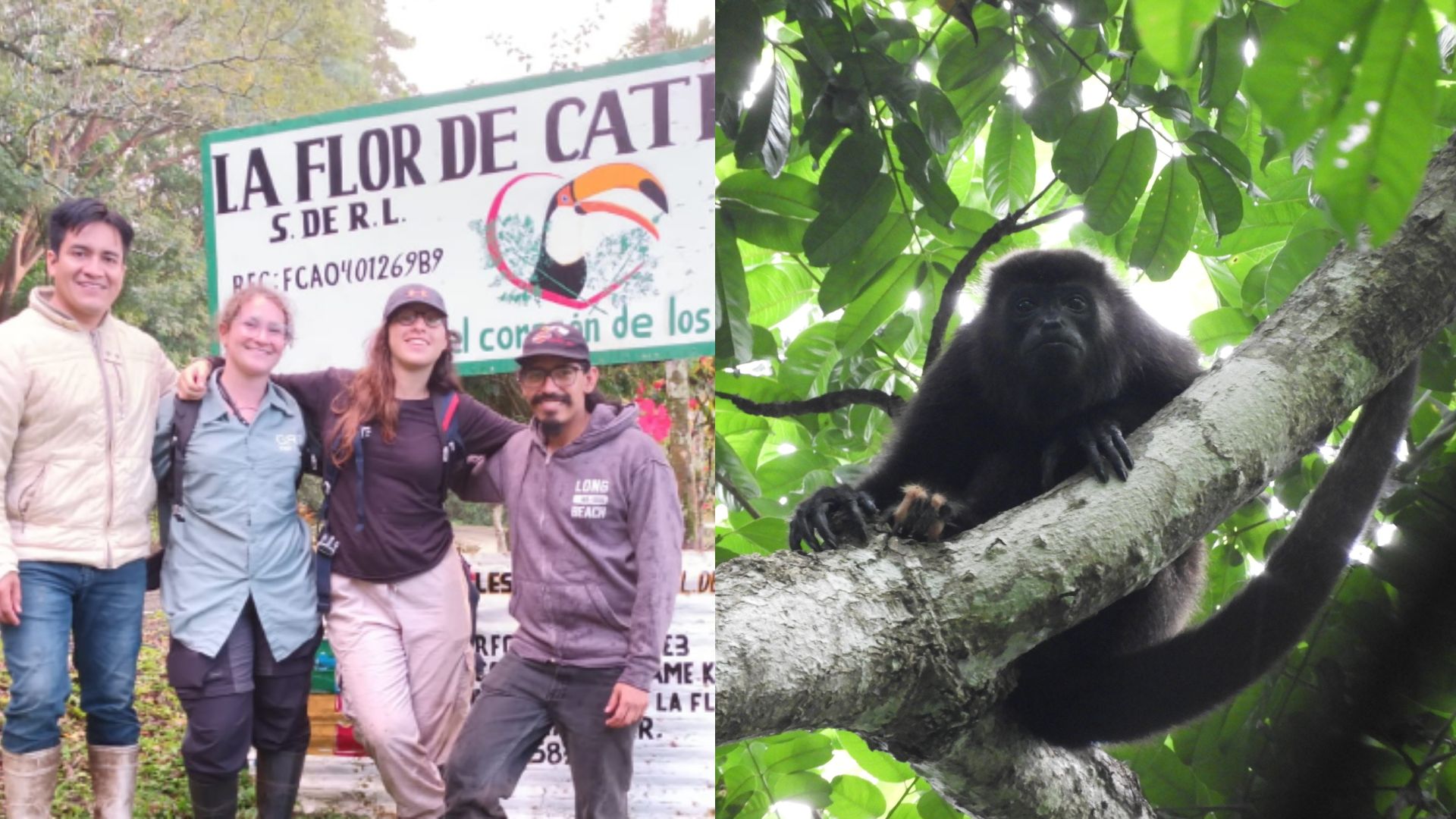
Figure 6. Research team and Biologist Maria Pira, author of this thesis (black shirt), during research work and observations of the mantled howler monkeys behavior (Alouatta palliata) in Veracruz, Mexico (Photographs by the research team of this Thesis, 2022).
Did you know that the mantled howler monkey (Alouatta palliata) is found in Livingston, Guatemala? FLAAR documented it!
The area of Livingston, Guatemala, is within the distribution areas of the mantled howler monkey. It is known that populations of this primate in this region are limited, making the record by FLAAR in this environment a significant discovery. Thanks to the tropical environment and extensive forested areas, Livingston provides the ideal habitat for the development of Alouatta palliata. The FLAAR organization, dedicated to the research and documentation of fauna and flora, has documented the presence of the mantled howler monkey in Livingston, Guatemala. Their studies and conservation efforts contribute significantly to the understanding and protection of these species, ensuring their ongoing role as an integral component of the wonderful ecosystem in the region.
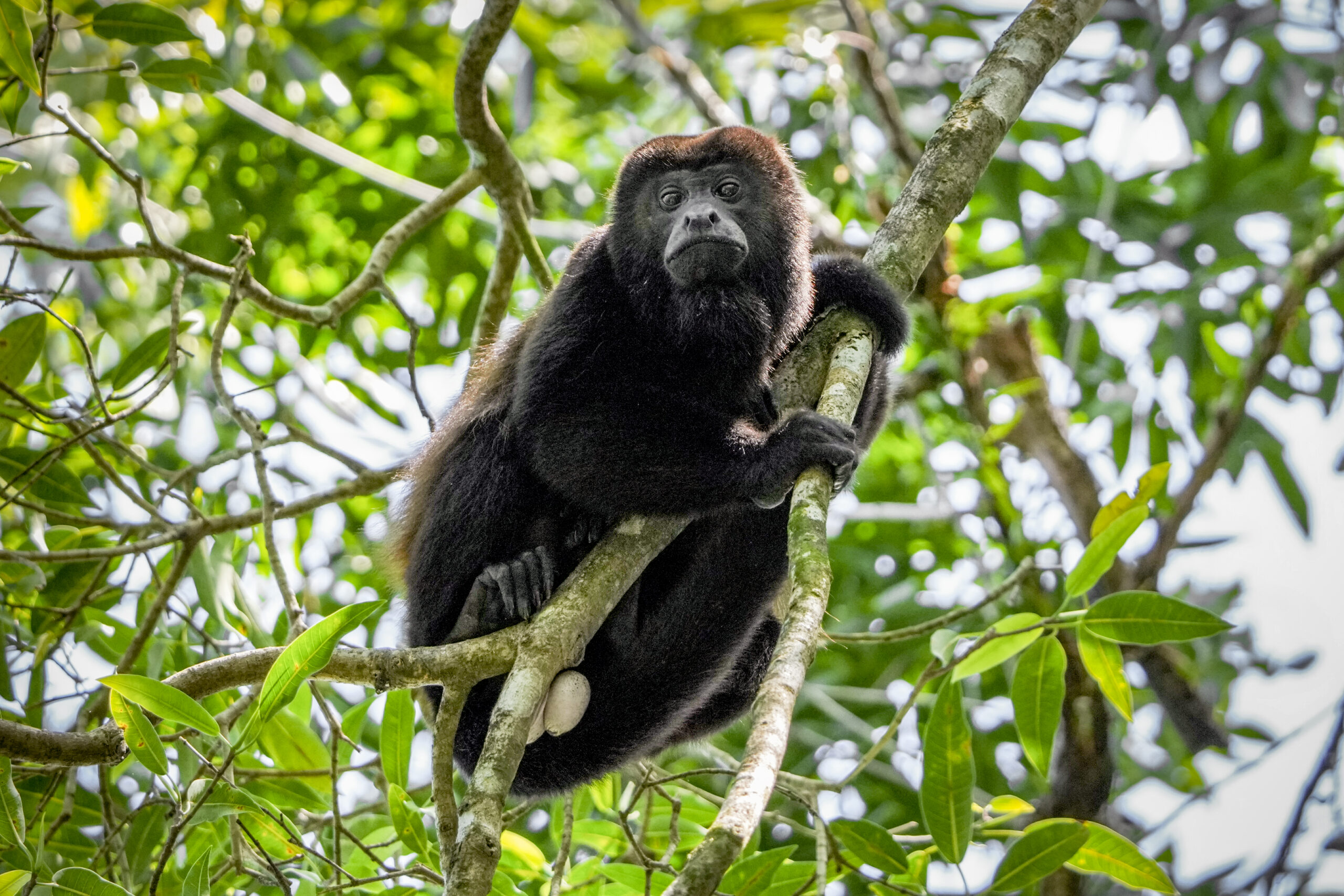
Figure 7. Adult mantled howler monkey (Alouatta palliata) documented in Livingston, Guatemala, by FLAAR (Alejandra Gutiérrez, FLAAR Mesoamérica, 2021).
Although the mantled howler monkey in Mexico is actually a subspecies (Alouatta palliata mexicana) of the one found in Guatemala (Alouatta palliata), the behavior patterns between both species are notably similar, if not identical. In this regard, in both cases, we observe how environmental changes, from temperature variations to habitat loss, can significantly impact the behavior and biology of these remarkable primates.
Given that these individuals represent a crucial fauna in the Mesoamerican region, it is of utmost importance to promote their conservation to safeguard both the species and its ecosystem. These incredible monkeys are exclusive to this continent, so we must strive to care for and protect them and their unique habitat.
Check out the record of these amazing primates in Livingston by FLAAR at this link:
https://flaar-mesoamerica.org/research-reports/resultados-del-proyecto-documentacion-de-biodiversidad-de-livingston/
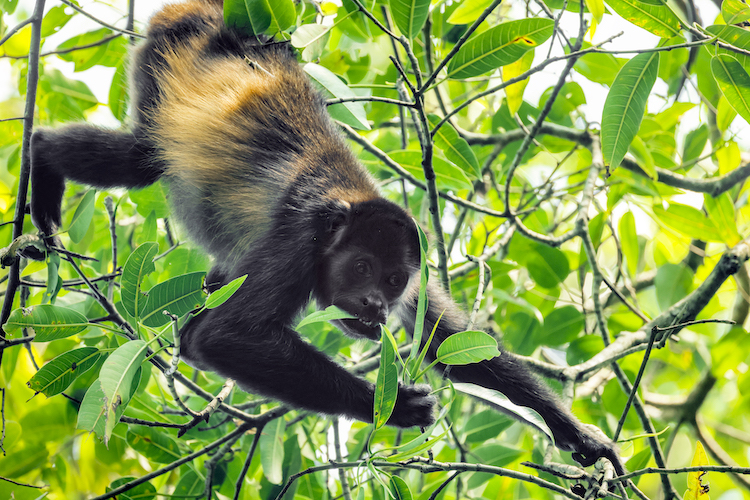
Figure 7. Adult mantled howler monkey (Alouatta palliata) eating leaves, documented in Livingston, Guatemala, by FLAAR. Photo published in FLAAR research report on Biodiversity Documentation in Livingston (Photograph by Alejandra Gutiérrez, FLAAR Mesoamérica, 2021).
Written by Licenciada Mariana Rivas Gálvez & Licenciada María Pira
Author of this Thesis Research: Licenciada María Pira (Biologist)
Acknowledgments by María Pira:
This graduation thesis is a heartfelt tribute to my mother, my greatest mentor, and my father, who instilled in me a love for nature. I am sincerely thankful to both of them for their wisdom and unconditional love, as well as the unwavering support of my grandparents, siblings, and friends. Over the past five years, my academic journey at the Biology Department of the University Del Valle de Guatemala has been immensely enriching. I extend my gratitude to MSc. Luis Ríos and Lic. Alina Castañeda for their valuable advice and roles in the examination committee. The University Veracruzana’s support in executing this study is appreciated, with special thanks to my main advisor, PhD. Pedro Días, and field assistant, Lic. Alejandro Coyohua, for their guidance and contributions that have significantly impacted the fields of ethology and primatology in Mexico and Mesoamerica.
A special thanks to FLAAR Mesoamerica for allowing my work to be published in their web and media. Sharing the results and research conducted by us scientists with the public is of vital importance so that people can better know and understand the incredible world that surrounds us.
Found out more about this incredible research by biologist Maria Pira! Read this thesis in this link: https://www.researchgate.net/publication/376232834_Patron_de_actividad_diurno_de_los_monos_aulladores_de_manto_Alouatta_palliata_y_su_variacion_en_funcion_de_factores_climaticos
Notes and concepts:
Animal Ethology: The “Animal ethology” refers to the scientific study of animal behavior in their natural environments. Ethology involves observing and analyzing the behavior of animals to understand their patterns, motivations, and adaptations.
Behavior (animal): “Animal behavior” encompasses the actions and responses exhibited by animals, including activities related to survival, reproduction, communication, and social interactions. Ethology studies these behaviors to understand their purpose and adaptation to the environment.
Bimodal (statistics): In statistics, “bimodal” describes a distribution with two distinct peaks or modes, indicating two prevalent values or ranges within the data.
Continuous focal animal sampling method: “The Continuous Focal Animal Sampling Method” is a systematic approach in ethology and behavioral ecology, involving uninterrupted observation and recording of a specific individual or group’s behaviors over a set period. It provides detailed insights into behavioral patterns, social interactions, and activities, enhancing our understanding of the observed animal’s behavior in its natural environment.
Ecology: Ecology is the study of how living organisms interact with each other and their environment, exploring relationships, adaptations, and the flow of energy in ecosystems.
Ethogram: An ethogram in biology is a thorough catalog detailing the behaviors displayed by a specific species or group of organisms. It provides a systematic inventory of observable actions, gestures, and activities in their natural environment. Ethograms are crucial tools in ethology, facilitating standardized documentation and analysis of behaviors. This systematic approach contributes to understanding behavioral patterns, communication, and social interactions within a given species.
Primates: Group of mammals that includes humans, apes, monkeys, and prosimians. They are characterized by forward-facing eyes, grasping hands and feet, and complex social behaviors.
Mastozoology: The scientific study of mammals, encompassing their biology, behavior, classification, and distribution.

